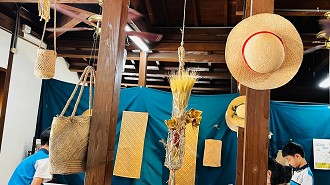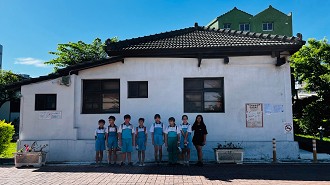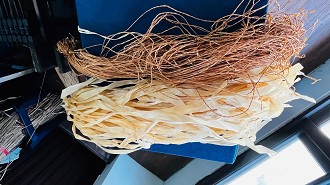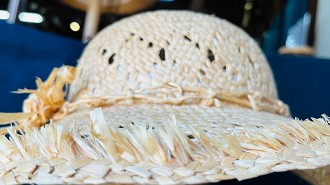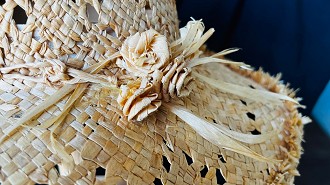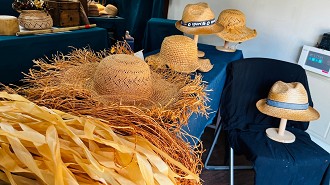"wood shaving grass"~ Can they be woven into a hat?
 |
(What)
What is the Taiwan cypress straw hat?
|
|
In Taiwanese, it is called "le̍h-á-tsháu" |
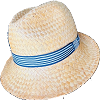 |
|
 |
How is wood made into a hat?
|
|
The "straw" is not made from rush grass but from leftover wood scraps from woodcarvers. These scraps are repurposed into thin cypress wood fibers for reuse. |
 |
|
 |
(When)
When was the golden age of the Taiwan cypress straw hat?
|
|
During the Japanese colonial period. |
 |
|
 |
Who liked the Taiwan cypress straw hat?
|
|
During the Japanese era, Western-style clothing was introduced, and it became fashionable for men to wear suits and hats.
|
 |
|
 |
(Where)
Where can you still see equipment for making Taiwan cypress straw hats today?
|
|
In the CHIAO-TOU community, Changhua County.
|
 |
|
 |
(How)
How is the Taiwan cypress straw hat different from other straw hats?
|
|
Cypress wood is rich in fibers and has a natural fragrance.
After the wood is shaved into thin strips, it undergoes a unique process of twisting them into threads.
|
 |
|
 |
(Why)
Why is the Taiwan cypress straw hat no longer popular?
|
|
Mainly due to the scarcity of cypress wood as a raw material.
|
 |
|
"Le̍h-á-tsháu" (笠仔草) made from "wood shavings grass" (柴絲草) are excellent examples of how Taiwan's traditional crafts combine functionality with natural beauty. The thin sheets made from Taiwan cypress wood, known as "le̍h-á-tsháu," play a crucial role in many handcrafted items, particularly hats and woven decorations. These materials are lightweight yet durable, and the weaving techniques allow for intricate designs that showcase the skill of the craftspeople.
Despite its name containing the word "grass," the material is not actually grass, but rather a type of thin, flexible wood strip, which contributes to its strength and texture. This craft is a testament to the resourcefulness of artisans who utilize local materials in creative ways, producing not only functional items like hats but also pieces that carry a sense of local culture and tradition.
The weaved cap made from these wood strips is not only practical, providing breathability and comfort, but also visually appealing with its natural, rustic look. It's fascinating how the materials' lightweight quality and natural aesthetics make it a timeless piece that blends cultural heritage with functional design. Have you seen any examples of these crafts in person?

